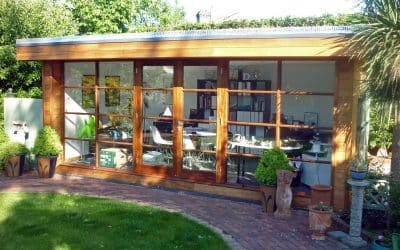TG Escapes Blog
Commuting makes us out of control and out of sorts
Anyone who commutes knows well the sinking feeling that settles upon them when the traffic, train, tube or bus grinds to a halt. As time stretches out, the sense of unease grows.
In a vacuum of useful information, a sensation of helplessness starts to swell and slowly you become aware of your pulse rate rising and your heart beat skipping out of time with its normal rhythm. Even when the journey is proceeding to plan, there are often other factors at play which can send our stress levels soaring.
The tired lorry driver that forgets to indicate before belatedly slamming on the brakes to turn; the cha cha cha of the I pod plugged in next to you or, my own private bugbear, the poor standard of personal hygiene of the person in whose armpit your nose is lodged.
A study of commuters travelling in the US measured levels of the stress hormone, cortisol, found in the travellers’ saliva at the end of a typical journey to work. In almost every sample stress hormone levels were raised. Nature only intended these hormones for short term duty in fight or flight, emergency situations. Prolonged and cumulative exposure is believed to damage brain cells, impairing our ability to remember and learn and affecting our sleep patterns.
Recent research by Erica Sandow of Sweden’s Umea University showed that workers with commutes of 30 miles or over are more prone to experiencing significantly higher levels of stress than average and be considerably more likely to suffer from high blood pressure and heart disease. Furthermore, they are more likely to become overweight during the course of their working lives (during which they will have more days off sick) and exhibit a higher than average divorce rate. No wonder so many commuters feel out of sorts!
The average commute in Britain is (apparently) 47 minutes long, each way. That amounts to at least an extra working day per week that commuters are losing from their home or working lives, not to mention the appalling waste of talent. Modern technology means that many of us leading desk and screen based working days do not have to be subjected to this daily depletion of life quantity and quality. Working from home has never made so much sense and that’s before I jump on the pollution and global warming bandwagon!
A Garden Escape office can usually be reached within 47 seconds (or longer, depending on if you stop to look at the snowdrops on the way) with a very low likelihood of uncontrollable delays (well, maybe a proper breakfast with the kids before school) or extraneous bass rhythms or bodily odours. Research has yet to be conducted, but I’m guessing cortisol levels are fairly humdrum for the average homeworker whose biggest problem might be working out how to fill that extra day.
About the author
More posts from our blog
Setting Up Green Energy In Your New Home
A bespoke eco-building needs an eco-friendly energy tariff to go with it. Here are some tips on setting up green energy in your new home. Setting Up Green Energy In Your New Home With a timber-frame eco-building, you know that you’re getting a bespoke environmentally...
How to build a garden room
Foundations go down - either concrete or low impact screw piles. Commence construction with the vertical timber frame and SIP panels. Create and position the roof structure on to the top of the garden room. Cedar cladding can be added to that the building is well...
5 ways LED lighting improves safety in modular buildings
Cheaper, longer-lasting and better for the environment — LED lights have plenty of benefits. Here, David Boultbee from Ultra LEDs explains how they can even be a safer option than traditional bulbs for lighting modular buildings. From manufacturers to consumers, the...



